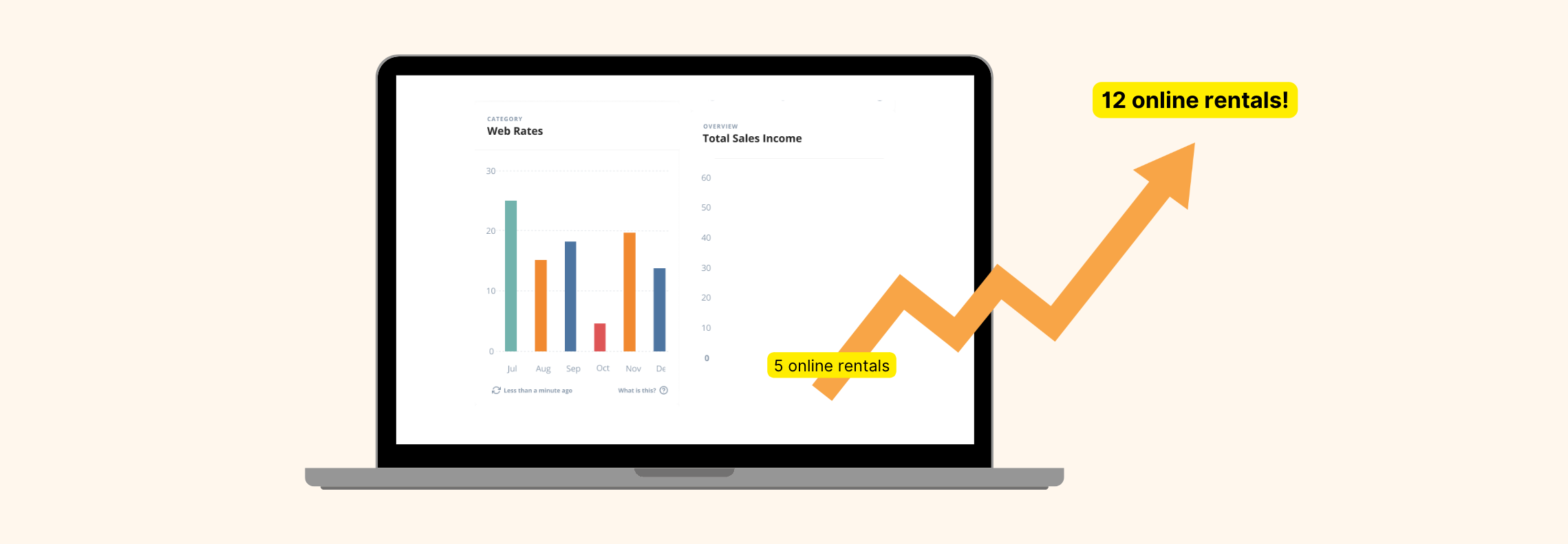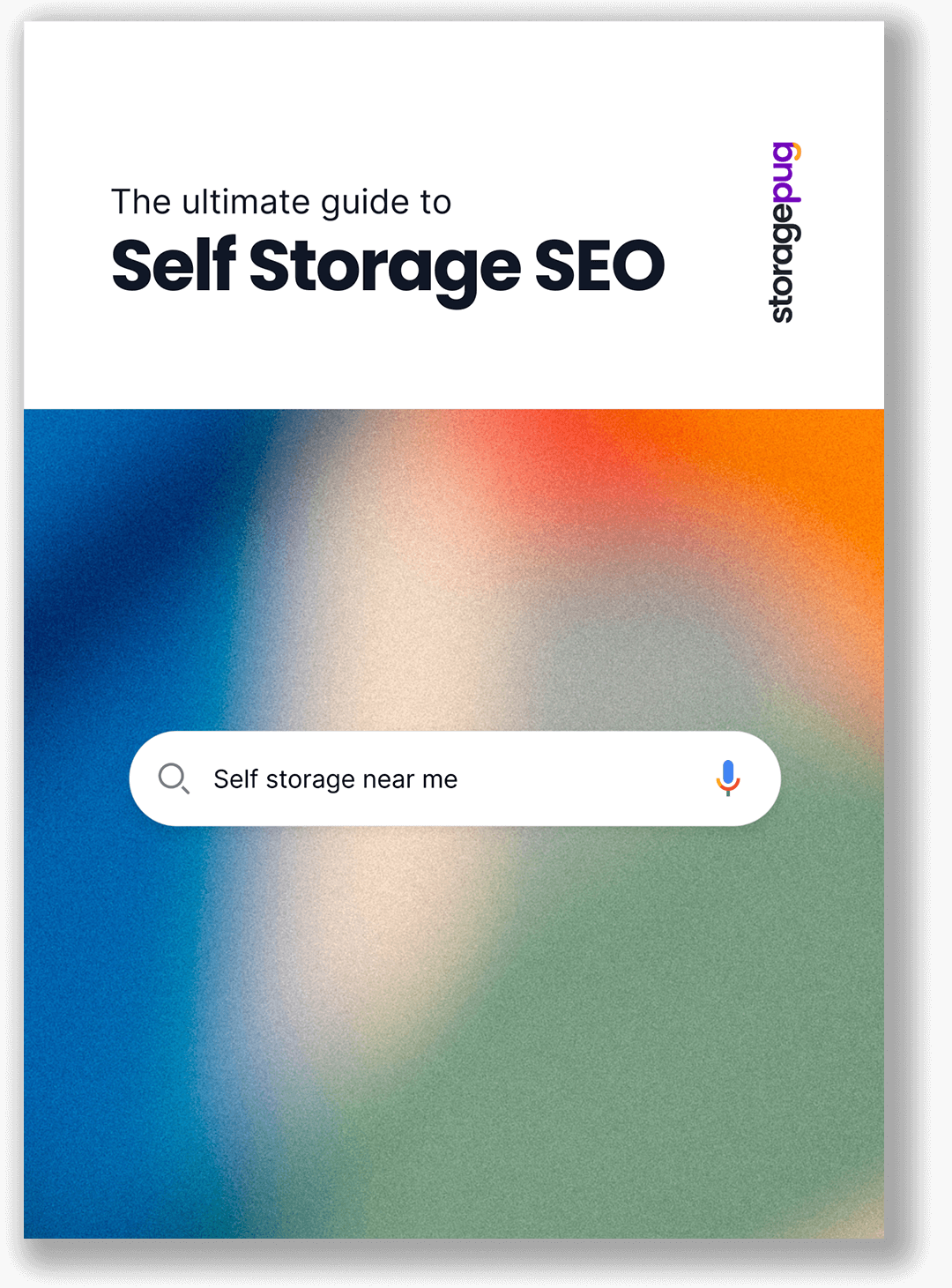Menu
July 5, 2023


Be honest: Do you know what data you should keep track of on your storage website?
For most operators, they probably just look at their rentals each month—or maybe even more often than that—and use their gut to determine if they’re on track or not. If they’re a bit more savvy, maybe they have rental numbers from other months and can compare.
It’s probably a complex but softly-defined equation considering the season, their goals, and how they feel about their financials.
Many operators just aren’t website people. And that’s OK.
This article will dive into the best metrics to track for your self storage website and some tips on how to use that information!
These are five of the most important metrics to track in regard to your website and its performance. There is other data that can come in handy, but this list includes the most basic and critical pieces of information.

Whether you use an internal marketing specialist or a marketing firm that builds your website, the chances are they’re delivering data to you about your website’s performance.
Unfortunately, data is meaningless without context.
Worse yet, many marketing companies that build websites are great at their jobs but not necessarily great at self storage. A one-size-fits-all approach may work well for e-commerce, blog sites, and many other types of websites, but self storage needs a little something different.
Let’s dive into these five metrics so that you know what actually matters and how to make use of it!
READ FIRST
There’s one thing you should know: The context for each of these metrics is important. Because storage is extremely localized and every single local market is different—and every single facility is different—one of the most crucial aspects of data tracking will be comparing your performance versus your own past data.
If you have nearby competitor data, somehow, then great! The chances are you don’t, though. And data from a facility even 10 miles away could look very different than yours because the market conditions are entirely different.
More on this right here, later in the article.
Like many items on this list, this metric is called exactly what it is.
There’s no jargon here. It’s as plain as you like: the total number of people visiting your website.
This is important because it helps give an idea of how well your website is performing one of its key jobs: drawing in visitors from various places on the internet.
Keep in mind that numbers for this metric will look incredibly different for every storage website.
HOW TO LEVEL UP
Looking to track your website visitors or already tracking this metric and want to take it to the next level? Start tracking the sources!
Adding tracking to links and being able to break down whether visitors came from organic traffic, Google Business Profile clicks, Google Ads, or external marketing efforts will help you make informed decisions about your website and marketing.
You were probably expecting this one, right? Getting rentals is the entire reason we do this, after all!
Tracking rentals is even more important than total web visitors. After all, if you’re happy with the number of rentals you get each month, do you really need more traffic?
But if you’re unhappy with the number of rentals you’re getting, you may need to either generate more website traffic or improve the odds of visitors renting. This is why tracking rentals is so important.
HOW TO LEVEL UP
While it’s not a way to level up your tracking, you can level up your understanding by keeping a finger on the pulse of your market and the industry as a whole.
Are industry-wide rentals up or down this year? Is there a sudden stagnation of incoming migration in your area—or worse, an exodus? Maybe a new company just open a massive facility so there was an influx of people?
Market conditions add much of the context you need to keep in mind when looking at your monthly rentals.
This is a trickier one than rentals.
A reservation isn’t a guaranteed rental. That said, reservations are still important. You should still be aware of how many reservations are coming through your website, because some of those will become rentals!
Here at StoragePug, we expect around 30 to 40% of reservations to become rentals. But this percentage will vary with your facility and even your managers.
HOW TO LEVEL UP
Track. Your. Reservation conversion %.
Not only should you track reservations, but you should also track the rate they’re becoming full-on storage unit rentals if you’re wanting to really level up your data game. This won’t tell you anything about your website, but it can help improve other aspects of your self storage business.

What’s a website funnel?
When we talk about a funnel, we’re referring to an overview of the number of people that start renting a unit and the number that move on to each stage of your rental flow.
Basically, this funnel completion metric will help you figure out how effective your online rentals are. In this metric, you’re not just measuring the quality of your total web traffic: you’re looking at only visitors that chose to start renting, meaning they’re highly likely to be on the market for a storage unit.
So, how well did your website’s rental flow capture that need and turn it into a rented unit?
HOW TO LEVEL UP
A well-defined rental funnel will break down each stage of the rental process. For example, it might start with the rent button being clicked, then show account creation, insurance selection, and any other additional steps. It will then finish with completed rentals.
You can level up your game by using these numbers to see if anything about your rental flow can be improved. If there’s a massive drop-off during mandatory ID upload, for example, then you might consider whether or not capturing their ID during the online rental stage is important enough to keep.
The final metric we’re looking at tells us which storage units are the most popular on your website.
This can tell us a lot. If you’re looking to expand, then it can help inform your expanded unit mix. If you want to run specials, it can help you decide which units might benefit most from discounts.
It’s also possible that the way you have a specific unit displayed on your website leads to it being chosen more frequently or less frequently.
If your 10x10 is the most popular storage unit rented in person, but your 5x10 is the most popular rented online, it’s possible there’s some disconnect there due to the way your manager sells the units in-person versus the way they’re portrayed on your website!
HOW TO LEVEL UP
One way to make use of this metric is to use it as context for other metrics. For example, maybe your rentals are low this month, and you’re not sure why. Looking into the data further, you see that your 5x10 is overwhelmingly your most popular unit online but you no longer have any available.
It may not be a problem with your website or your marketing, but instead with your supply versus your market’s needs.
Now that we know what the five most important metrics to track are, how do you make the most of the data?
Remember, we talked about how different every storage facility and every market is. Unlike in e-commerce, where websites compete against every other website in the same category across the internet, self storage websites really only need to compete with those in their local market.
Because data on your local competitors is probably pretty hard to come by in any depth, the best way to use this data is to compare the numbers against your own historical data.
We recommend these steps for using your website performance data:
You might see numbers online saying that the average conversion rate is X or Y, and your own conversion rate is higher or lower than this. Are you doing poor? Are you doing well?
The main context that matters is your own facility’s.

Tracking your metrics quarterly allows you to see a whole picture instead of getting caught up in the variability of the day-to-day or month-to-month changes that happen. And comparing your numbers year-over-year helps you more accurately rate your performance in the proper context.
If you had a bad year last year and your numbers improved the same quarter this year, you know you’re on the right track! But if you had an unusually good year last year and your numbers are lower the same quarter this year, that doesn’t necessarily mean you’re doing poorly.
Having the historical data and context on market forces helps place your website’s metrics into perspective and inform your analysis.

The above metrics and methodologies are some of the most basic and important. But there are other numbers—and other ways to look at the same numbers—that can also be used to great effect.
If you’re interested in going above and beyond with even more metrics, here is a short list of other data to track:
Many of these metrics are self-explanatory. They may help you in evaluating how well your website is working, or determining if you need to change anything up in terms of your content or rental flow.
Some of this data, such as website visitors by source, can also help you effectively plan where to place marketing dollars and effort.
For example, if you find that you’re consistently drawing the majority of your traffic from Google Ads (and you’re in a market where competitors are also running ads), that might be a signal to maintain your ad budget. Alternatively, not receiving many visitors from ads compared to other sources could mean you should dial back your ads budget to save money.
Another advanced tip is to organize metrics into different buckets based on importance and even types of information. Here are three suggestions:
Numbers that are tracked monthly will help you keep tabs on the health of your storage business or website over time.
KPIs you derive from these metrics can help you make informed decisions, such as where to spend your marketing budget, whether a website change made an impact, and so on.
Some data is interesting but not useful to most operators. For example, how many of your customers are on mobile devices versus desktop computers? This stat is interesting, but probably not important to your business. After all, your website should work for both!
Want to see more interesting self storage information and guides? Check out some of these posts:
At StoragePug, we build self storage websites that make it easy for new customers to find you and easy for them to rent from you.
